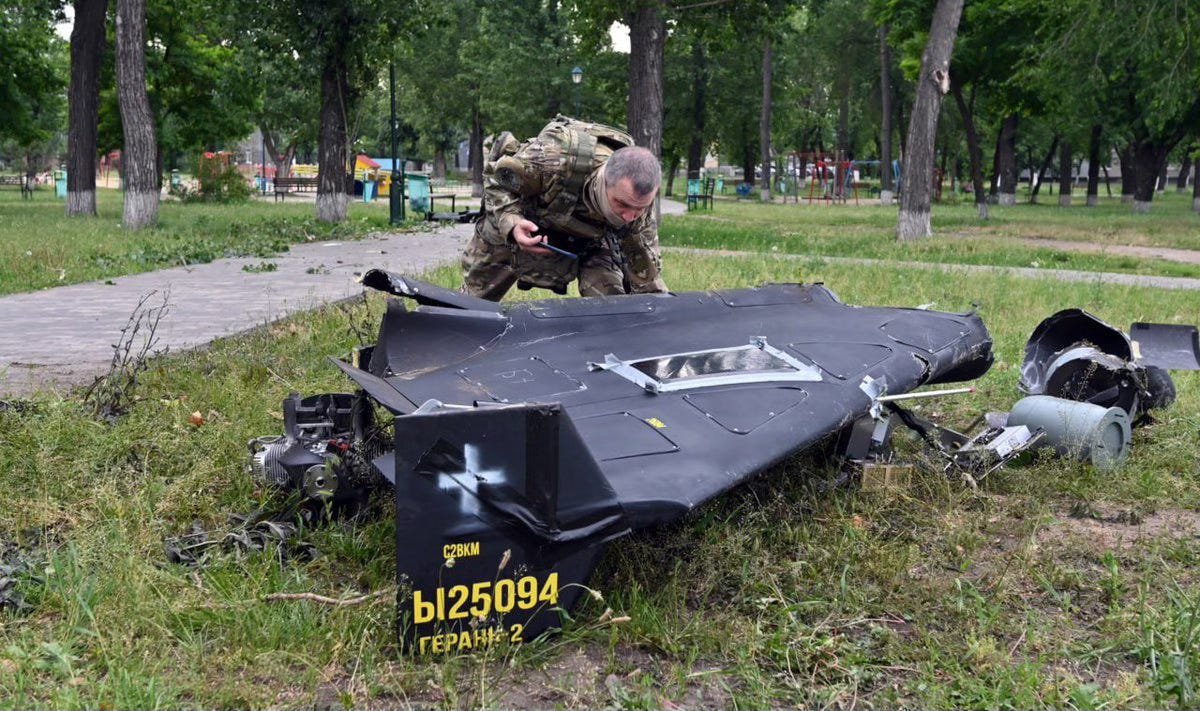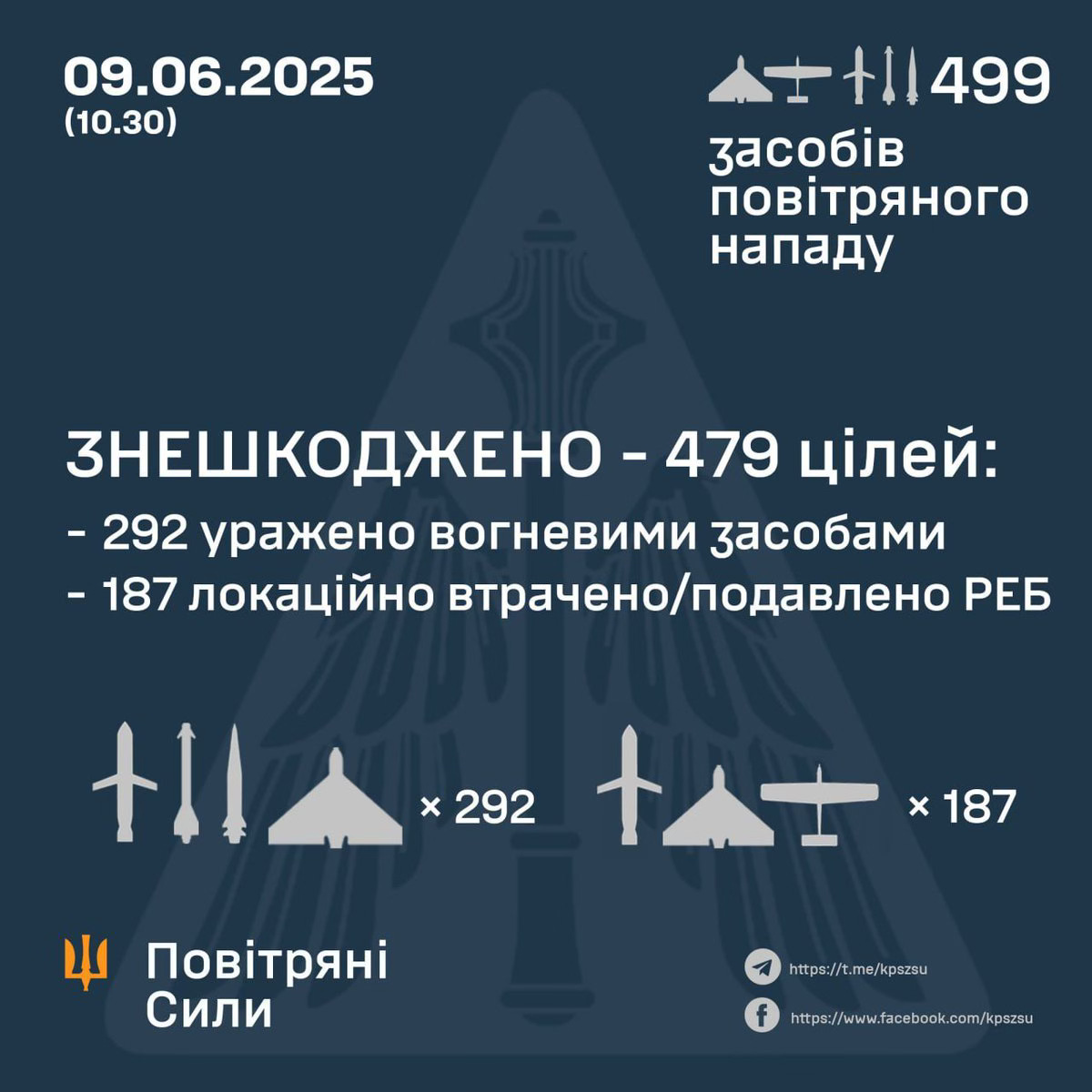Russia's Dizzying Drone Offensive
After Ukraine struck bomber bases, evidence of the Kremlin's industrial transformation
It’s been another testing week for Ukrainians, with records set just a fortnight ago for Russian drone launches against them already broken. There are important pointers here not just for the embattled citizens of Kyiv or Kharkiv but for western countries and their plans for rearmament.
We are reminded of that centuries old principle of the Russian way of war that ‘quantity has a quality of its own’.
Ukraine’s expertly conceived Operation Spider’s Web, hitting bomber bases deep in Russia, excited the admiration of many. But as General Richard Barrons, one of the authors of Britain’s Strategic Defence Review told me soberly, “it was a brilliant operation, but I know they're only going to do it once, and those Russian missiles will come every day”.
And indeed, that’s what happened: in the hours of darkness of 8/9th June, 499 Russian long-range missiles and drones were fired at Ukraine, and the following night 322. The great majority of these weapons, 479 on the first night and 315 on the second, were what Russians call Geran-2 drones (it’s derived from the Iranian model called a Shahed).
These are relatively slow, propeller driven aircraft, that typically fly 1000-1500km to their targets. Many of those being launched at the moment are simpler and less costly, having no warhead, being used as decoys.
The remarkable battle of attack and defence in the skies of Ukraine has evolved steadily since September 2022 when these flying bombs made their first appearance, courtesy of a big commercial deal with Iran. Ukraine deployed a system of acoustic detection, linking hundreds of mobile phones to pick up the Gerans-2s’ droning engines, plotting the direction of each new attack.
For the most part, thwarting these attack waves does not expend the precious missiles given them by the West. Instead, Ukrainian forces use jammers, planes, and thousands of very old fashioned-looking anti-aircraft guns to bring them down. In their turn, the Russians plot eccentric flight paths, trying to keep their enemy guessing where the target might be, step up their own electronic warfare, and send decoys.
So let’s come back to the start, and the indicators that this is changing. It had become common for Russia to save up its drones and missiles for big attacks separated by several weeks. But this week’s salvoes followed a series late in May in which 900 were fired in three days.
Production of Geran-2s is evidently expanding apace. During late 2023 to April 2024 launches averaged about 3-400 per month, peaking at 616 in December 2023. Ukrainian military intelligence now estimates that Russia is building 5,200 a month, with just under half that figure being the decoy version.
Go back one year or eighteen months and the Russians would save up for weeks to fire 100 or 150 in a single night. Now it seems to be possible to reach two or three times that.
The Ukrainians have destroyed some of the bombers used to fire cruise missiles but their attacks against the plants making these drones have had limited success. Production of the more advanced, faster flying missiles, has also increased but not to the same extent as the drones.
Although most of them are shot down or jammed, these attacks require constant vigilance, wearing people down. When they do get through, they are often targeting power facilities and other critical infrastructure. The Ukrainians are very good at patching things up quickly but it’s a constant effort.
The fact that production has been raised so impressively despite Ukrainian sabotage or long distance drone attack of their own, gives us a grim indication of the degree to which Russia has successfully mobilised its defence industries in response to the challenge of war. Indeed this week, Ukrainian military intelligence (known by the acronym HUR) has estimated that Geran-2 production will climb from 170 a day currently to 190 by the end of the year.
HUR also estimates that other production rates have gone up, the Iskander-M ballistic missile from 40 a month this time last year to 60-70 now, and the Kinzhal air launched ballistic missile two to three fold. These are far harder to shoot down, requiring the use of scarce Patriot or IRIS missiles.
We know that Russia’s attempts to build more complex weapons like fighter jets or even tanks have been more sluggish. But there is no doubt that on all sorts of consumables like shells, missiles and drones, manufacturing has spun up very impressively.
This is a major challenge for Ukraine. But it’s also something for Nato countries to keep in mind, noting the speed with which Russia will be able to stockpile these weapons when a ceasefire in Ukraine eventually comes about.
A rapid switch in production from Geran-2’s to something with a longer range and greater autonomy could mean a build-up of thousands of weapons a month capable of striking deep into Nato territory. The same goes for many other weapons.
As we head towards the Nato summit we’re bound to be reminded of Russia’s ability to use these mobilised industries to reconstitute its forces. In my view the human losses, of middle-ranking officers or highly trained specialists, will take years to make good, but we can hardly ignore the military industrial challenge that Russia could pose from the moment any ceasefire comes into effect.







Putin doesn’t play by the rules and nor should we. We being the EU/NATO without the USA. The rules of a ceasefire play into his hands because he believes he can carry on rearming while we sit and watch. To me that is no ceasefire. We must work with Ukraine to pull off more spectaculars on Russian soil until Putin gets the message. Pull out of Ukraine and stay within your legitimate borders. Easy to say I know but we can’t let him stick up two fingers to democracy.
Another excellent article, Mark. As soon as I heard about Spiderweb, I thought the Shahed assembly plant in the Alabuga SEZ must be the next target on the Ukrainians hit list. And if Spiderweb really took 18 months to plan, perhaps that attack is already being prepared?